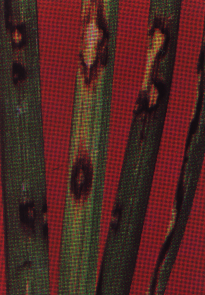What causes lawns fungus and disease ?
Turf disease can be serious when weather and or lawn management favor disease development. Plant diseases, including the common lawn diseases, develop when several conditions occur simultaniously and persist. Fungi, the most common cause of lawn diseases, are microscopic, thread like organisms that spread by means of air or water born spores. The spores function like seeds, producing new infections when the environment is favorable for a period of time and the host is susceptible. Disease develops when the pathogen (fungus) is present on a susceptible host (bluegrass) in a favorable environment such as temperature, moisture, light, nutrients and stress factors.
What can you do ?
Good turf management practices are usually adequate to prevent serious damage. Integrated cultural practices for turf management and pest control will limit the need for fungicides. Disease development often is associated with the lack of proper application of these turf management practices: 1) selection and planting a resistant grass variety, 2) sufficient water at the correct time, 3) timely fertilization with the right amounts of nutrients, 4) regular mowing at the recommended height, 5) provisions for adequate sunlight and air movement, 6) maintenance of good soil aeration and drainage.
Recommendations
1) Avoid evening watering-Turf needs time to dry out before sunset.
2) Proper amounts of water. Typically every 2-4 days depending on your soil type. Bluegrass requires more T.L.C. than fescue. Wet the soil 4-6 inches deep with each watering. Use a screwdriver after watering and see how deep it penetrates easily. Times will vary based on your watering system and different areas of the lawn. With time you will know what works best for you.
3) Mow 3" or higher. Avoid mowing during the hot times of the day and don't let it get too tall before mowing, both will reduce stress on the lawn.
4) Plant turf type fescue for a better turf in our environment.
5) Aerate yearly to reduce compaction and allow better air, water and nutrient movement in the soil.
Fungicide Treatments
Fungicides can be applied to slow the progress of disease. They are quite costly and require treatments every 7-10 days. Typically it's best to follow the proper cultural habits listed above and seed as necessary to thicken things back up in the fall with more resistant turf varieties.
 
Dollar Spot Fungus Leaf Spot Fungus
| 



